Winter Photography Tips
Winter time can be quite cold, which might put you off going out with your camera. But this time of year brings with it photographic opportunities not available at other times of year. So wrap up warm and brave the cold to grab some great shots.
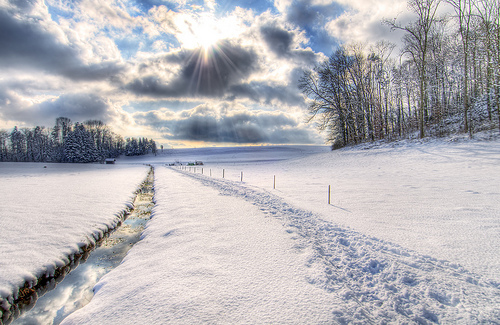
Snow and water by Tambako the Jaguar on flickr (licensed CC-BY-ND)
In this article I'll share a few tips about shooting in cold weather, and how to make the most of what the winter season offers.
Great light
During winter the sun spends a lot of the day quite low in the sky. This results in longer periods of soft warm light than you get in the summer. Make the most of the winter light while you can.
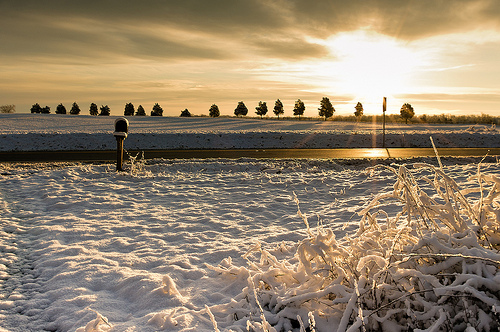
snowy sunrise by loco's photos on flickr (licensed CC-BY-ND)
Sunrises are much later in winter, meaning you don't have to get up early to see them. Great if you're not an early riser. For many people it can be worth leaving a little earlier for work, and then stopping somewhere on the journey to grab some nice sunrise shots.
Snow
Scenes can be completely transformed by a blanket of snow. Capturing good photos of snow can be a little tricky though, so here are a few tips:
It is a good idea to set your White balance correctly, as otherwise you may end up with snow that looks more blue than white. Set the white balance to daylight or cloudy depending on the conditions, or set a custom white balance using the snow.
Snowy scenes will throw off your camera's exposure metering, resulting in photos where the snow looks more grey than white. To correct for this, apply one to two stops of positive exposure compensation.
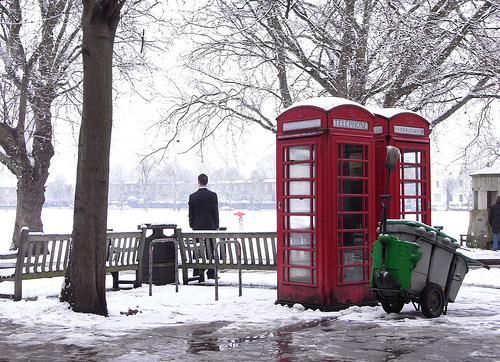
Snow 15 by Exile on James Street on flickr (licensed CC-BY-ND)
If shooting in falling snow, it is a good idea to give your camera some protection. Using a lens hood will make it less likely that you'll get flakes landing on the front element of the lens. You can also cover the camera with a plastic bag that has holes at both ends. Use a couple of elastic bands to keep it snug around the lens.
To capture the texture of snow, it really helps to have side lighting. Thankfully at this time of the year the sun is low in the sky most of the day, so side lighting isn't difficult to find.
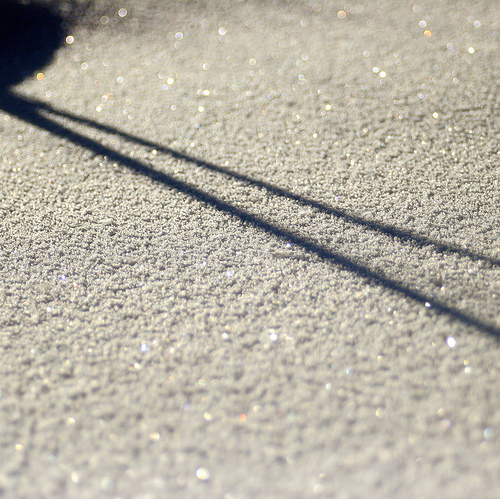
deep and crisp and even by jenny downing on flickr (licensed CC-BY)
If the sky is cloudy and overcast though, you will find it hard to bring out the texture of snow. For shots of a small patch of snow, an external speedlight could be used to add in side lighting. For larger landscapes there is not a lot you can do except wait for a sunnier day.
Look for contrasts against the snow. Trees and twigs sticking out of the snow work well with their very dark tones contrasting nicely against the white snow.
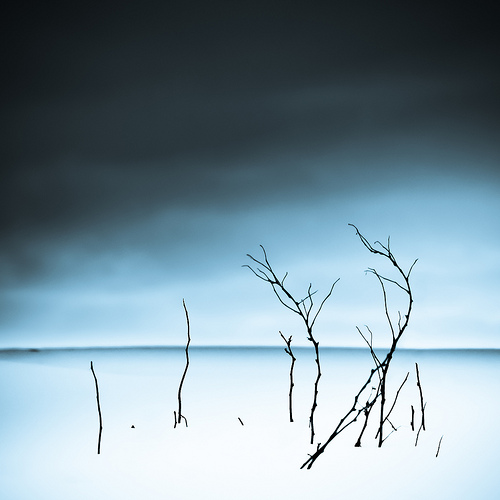
Twigs in snow by Salmando on flickr (licensed CC-BY-SA)
As well as tonal contrasts, look for color contrasts also. Bright saturated colors will stand out well against the snow. This could be red berries, someone wearing a colorful coat, or the sides of a building that aren't coated with snow.
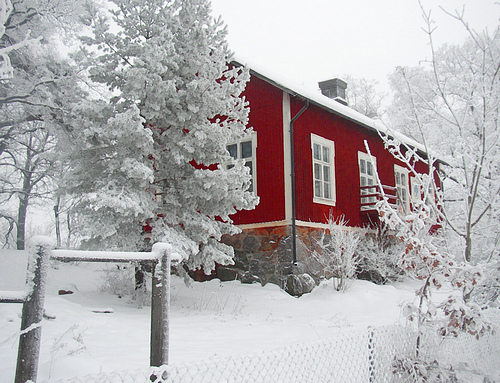
Red house by Per Ola Wiberg ~ powi on flickr (licensed CC-BY)
The snow acts like a giant reflector, bouncing off light and filling in shadows. This can be great for portrait photography.
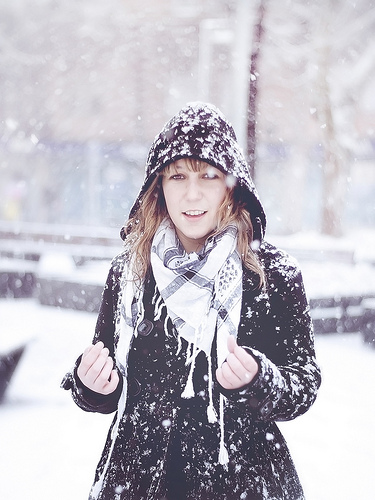
Untitled by Luis Hernandez - D2k6.es on flickr (licensed CC-BY)
If you have kids or grandchildren, don't forget to get some shots of them enjoying themselves in the snow. Children playing in the snow, making snowmen, sledging, and having snowball fights can all be great photos. Even if these photos don't turn out to be technically great, you'll still treasure them for the memories they provide.
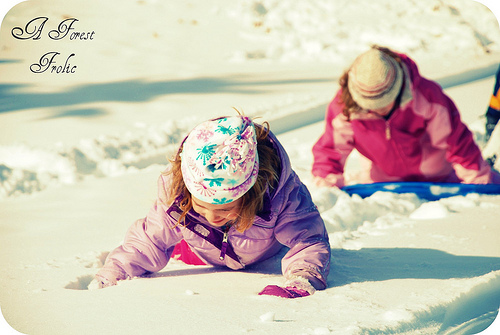
climbing the sledding hill in 2 1/2 feet of snow by AForestFrolic on flickr (licensed CC-BY)
Frost
If you don't get any snow at winter, it is often cold enough at least a few times over winter that you'll get a frost. Hoar frost is the most amazing kind of frost, where plants and trees get covered in a network of large ice crystals.
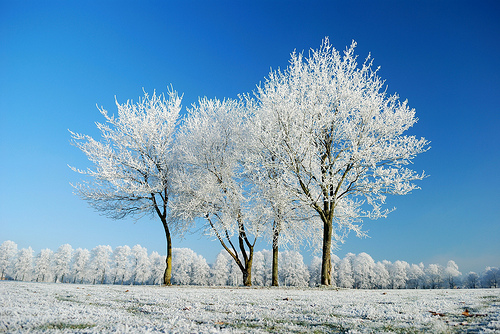
Victoria Park, Leicester by Matt Neale on flickr (licensed CC-BY)
Sadly hoar frost only occurs in certain conditions, and you are much more likely to have a standard ground frost than see hoar frost. But even ground frost can give some excellent photographic opportunities.
Look for frost patterns on the glass of outbuildings, such as a green house. The frozen ice crystals adhered to the glass make for great close-up shots.
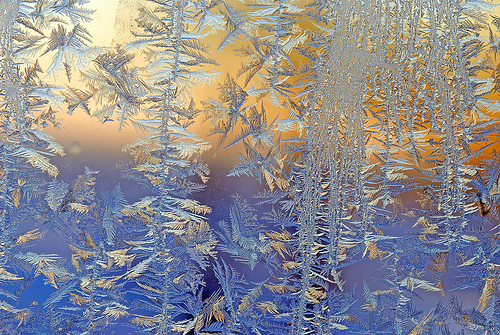
Blue in Yellow by tlindenbaum on flickr (licensed CC-BY-ND)
Frost on grass, frosty fallen leaves, frosty moss growing on a wall, etc. are all good subjects for close-ups as well. As with the snow, look particularly for subjects where there is a strong tonal or color contrast between the frost and whatever the frost is adhered to.
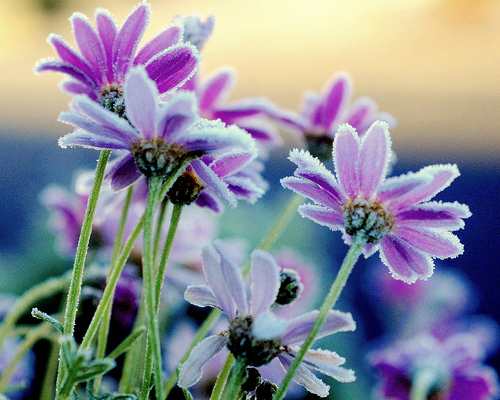
Frosted Flowers #2 by RC Designer on flickr (licensed CC-BY)
Mist
Misty mornings are probably more associated with Fall than Winter, but mist is still pretty common throughout winter. As the sun rises and starts to burn off the early morning dew or frost, it can create a very nice mist effect.
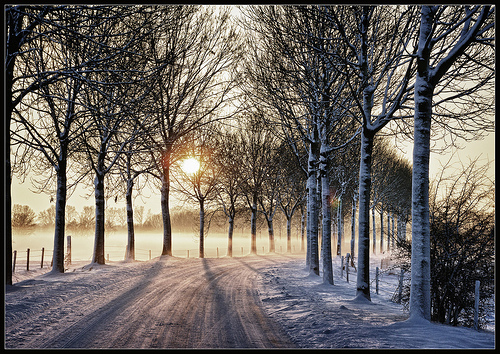
Winter Wonderland (part 2) by Bert Kaufmann on flickr (licensed CC-BY-SA)
Mist can be used to help add depth to your photos as objects slowly fade away into the distance. Mist lit up by the early morning sun also adds another dimension to your photos.
Winter photography preparation
In the cold, batteries can run out very quickly. It is a good idea to bring a spare battery for your camera. Keep it in an inside pocket, close to your body, where it will be kept warm.
If you move your camera from a cold environment into a warm one (e.g. bringing your camera inside from the cold), then condensation will form on it. Before you bring your camera back inside, place it in a zip-lock bag, optionally with some silica gel packets as well. After bringing the camera indoors, leave it in the bag until it has reached room temperature. You can then remove the bag without fear of any condensation.
Similarly, if you are shooting outside, don't keep your camera inside your jacket between shots. Inside your jacket will be much warmer than the outside air, and you'll find that you get condensation on the camera. (Condensation on the camera lens will result will result in very low contrast slightly blurry photos).
It is a good idea to set up your camera before going out. Set all the shooting settings to what you think you'll be needing. If you're using an interchangeable lens camera, then attach the lens you'll be most likely to use to the camera. Get it all setup and ready to go so that you don't have to be fiddling around with it in the cold.
Winter is a great time for photography. Don't let the cold and slippy conditions put you off. Wrap up warm and get out there to take some great photos.




